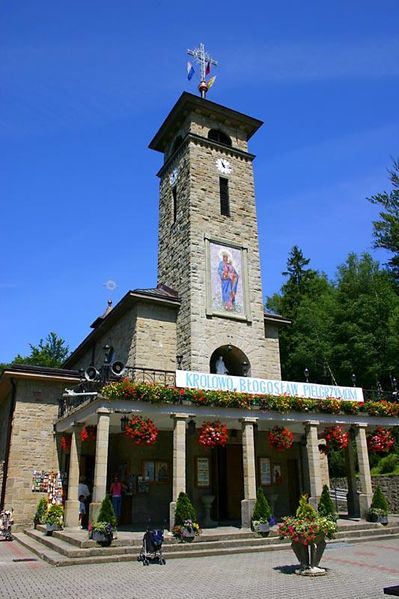|
Szczyrk to miasto liczące około 5,5 tys. mieszkańców położone w Beskidzie Śląskim w dolinie dużego potoku Żylica. Ze względu na uprzywilejowane uwarunkowania przyrodnicze tj.: górskie położenie, korzystny klimat, duże nasłonecznienie, długo zalegającą pokrywę śnieżną oraz naturalne zbiorowiska roślinne Szczyrk jest miastem o wysokich walorach rekreacyjno-wypoczynkowych. Najważniejsze atuty turystyczne miasta oraz jego okolic to doskonałe warunki do turystyki pieszej oraz rowerowej, narciarstwa, snowboardu, a ponadto paralotniarstwa i saneczkarstwa. Dodatkowym atutem jest kolej linowa na Skrzyczne, skocznie narciarskie oraz liczne narciarskie trasy zjazdowe. Miasto Szczyrk jest jednym z współorganizatorów Tygodnia Kultury Beskidzkiej, w którym bierze udział corocznie ok. 100 zespołów folklorystycznych z całego świata.
 Pierwsze wzmianki o osadzie Szczyrk pojawiają się ok. XV w., gdy na te tereny zawędrowała ludność pasterska z południa Europy albańsko-rumuńskiego pochodzenia - Wołosi. Ówcześni mieszkańcy zajmowali się rolnictwem, pasterstwem oraz karczunkiem lasów. Wraz z rozwojem ludności osadnictwo przesuwało się wyżej w kierunku gór. Zwiększyła się produkcja drewna oraz rozwinęło pasterstwo. W XVIII - XIX w. Szczyrk dostarczał drewna do hut na Górnym Śląsku. Wytwarzano także wełniane sukno. W tych czasach po okolicy grasowały liczne bandy, które słnęyły z napadów na bogatych gospodarzy. Najbardziej znanymi zbójnikami byli Ondraszek i Klimczok. O rozwoju turystki możemy mówić po zakończeniu I. wojny światowej, gdy w Szczyrku leczono rannych żółnierzy austriackich. W okresie międzywojennym powstaje kilkanaście pensjonatów oraz schronisko górskie na Skrzycznem. Jednak wzrost znaczenia Szczyrku odnotowuje się po II. wojnie światowej, gdy powstaje wyciąg krzesełkowy na Skrzyczne, liczne wyciągi narciarskie oraz trasy zjazdowe, a śląskie zakłady pracy budują domy wczasowe. 1 I 1973 roku Szczyrk otrzymuje prawa miejskie i staje się jednym z najważniejszych ośrodków narciarskich w Polsce. Obecnie miasto posiada bazę noclegową dla około 7500 osób. Znajduje się tu 60 km tras narciarskich, rynna snowboardowa, naturalny tor saneczkowy, skocznie narciarskie, 70 km szlaków górskich i ponad 60 km tras rowerowych. Szczyrk to także doskonałe miejsce dla paralotniarzy. Skrzyczne to najlepszy punkt startowy dla fanów tego sportu.
 Od 1999 r. miasto należy do powiatu bielskiego. Aktualnie powierzchnia miasta wynosi ok. 39 km2.
|
|||||||||||||



|

|

|

|



